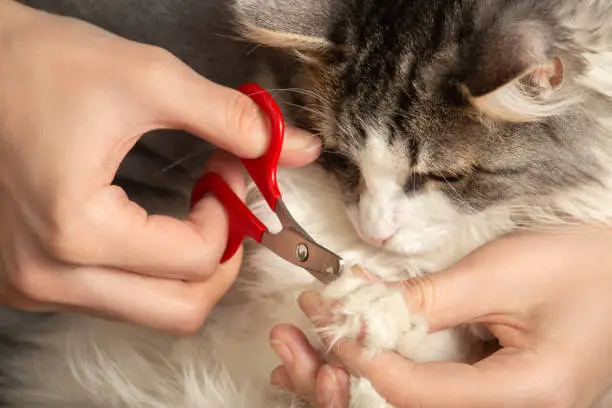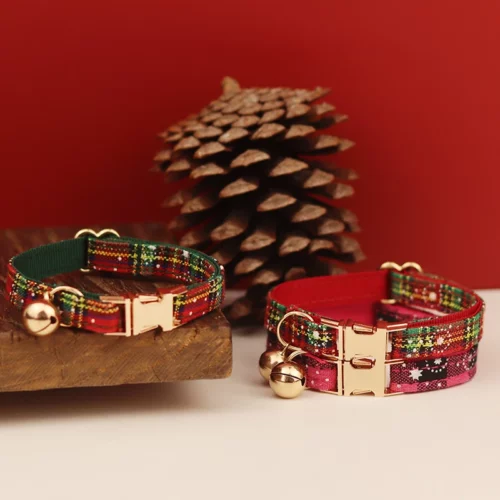When it comes to keeping your pets’ claws trimmed, it’s important to use the right tools for the job. While cat and dog nail clippers may seem similar at first glance, they are actually designed with key differences to cater to the unique needs of each pet. Whether you’re a first-time pet owner or a seasoned pro, understanding the differences between cat and dog nail clippers can make the process much easier and more effective for both you and your furry friend.
Let’s break down the key differences and similarities between cat and dog nail clippers to help you choose the right tool for your pet’s grooming routine.
Differences Between Cat and Dog Nail Clippers

1. Size and Shape
- Cat Nail Clippers: Generally, cat nail clippers are smaller and more compact. Since cats have smaller, more delicate nails compared to dogs, these clippers are designed to accommodate their tiny claws without causing unnecessary stress or discomfort.
- Shape: Cat nail clippers typically have a slender, curved design to match the natural curvature of a cat’s claws, ensuring a precise and clean cut.
- Blade Type: Many cat clippers have guillotine-style blades or scissor-type clippers. The guillotine style works well for smaller nails, and the scissor-type is often preferred for its accuracy and control.
- Dog Nail Clippers: Dog nail clippers come in various sizes and are generally sturdier than their cat counterparts. Larger dogs, with their thicker and tougher nails, require clippers that can handle more force. These clippers often have wider, heavier handles for better grip and leverage.
- Shape: Dog clippers often come in a straight-edged design, especially for larger breeds, to provide a clean cut for their thicker nails. Some clippers for dogs also have a safety guard to prevent cutting too much of the nail at once.
- Blade Type: The most common dog nail clipper styles are scissor-type and guillotine-style as well. However, some heavy-duty clippers designed for large dogs feature spring-loaded mechanisms for ease of use.
2. Cutting Power and Precision

- Cat Nail Clippers: Cats have very thin and fine claws that don’t require as much force to cut. As a result, cat nail clippers are designed to make a quick, clean cut with minimal pressure. This helps reduce the risk of cracking or splitting the nail, which can be painful for your kitty.
- Dog Nail Clippers: Dogs, on the other hand, often have thicker nails that need more force to trim, particularly larger dogs. As a result, dog clippers are designed to handle more pressure and are generally more robust. For dogs with very thick nails, heavy-duty clippers or rotary grinders may be necessary for a clean cut.
3. Safety Features
- Cat Nail Clippers: Many cat nail clippers come with safety features like a stop guard or a safety notch to prevent over-trimming, which can hurt your cat. Since cats have smaller nails, accuracy is essential to avoid cutting the quick (the sensitive part of the nail that contains blood vessels and nerves).
- Dog Nail Clippers: Dog clippers, especially those designed for large breeds, often include safety guards to help prevent cutting too deeply into the nail. Some dog clippers also have an ergonomic grip to provide comfort and control while trimming.
Similarities Between Cat and Dog Nail Clippers

- Purpose: Both types of clippers serve the same purpose: to trim your pet’s nails safely and effectively. Whether you have a cat or a dog, regular nail trimming is crucial for maintaining your pet’s health and preventing problems like overgrown nails, which can cause discomfort or even injury.
- Design Options: Both cat and dog clippers are available in scissor-style, guillotine-style, or clamshell-style, depending on your personal preference and the type of nail your pet has. Some clippers are manual, while others are battery-operated for added convenience.
- Material: Both types of clippers are typically made of high-quality stainless steel for durability and sharpness, ensuring clean cuts with minimal effort.
Choosing the Right Clippers for Your Pet
When deciding between cat and dog nail clippers, consider the following factors:
- Size of the Pet: Choose clippers based on the size of your pet’s nails. Smaller pets, like cats, require smaller clippers, while larger pets, like dogs, may need more heavy-duty clippers.
- Nail Thickness: If your pet’s nails are thick or hard to trim, you may need heavy-duty clippers or a nail grinder to make the job easier.
- Comfort and Safety: Look for clippers that are easy to handle, with an ergonomic design and safety features to prevent over-cutting.
- Your Experience Level: If you’re new to trimming your pet’s nails, consider starting with scissor-type clippers, which offer better control. For experienced owners, guillotine-style clippers may offer quicker and more precise cuts.

Conclusion
In short, while cat and dog nail clippers serve the same function, they are designed differently to accommodate the varying sizes and shapes of your pet’s nails. By choosing the right clippers for your cat or dog, you can ensure a smooth, safe, and stress-free nail trimming experience.
If you’re looking for high-quality pet grooming tools, including cat and dog nail clippers, Rufbud has you covered. At Rufbud, we offer a variety of pet care products designed to make your pet’s grooming routine easier and more comfortable. From nail clippers to dog harnesses, cat toys, and travel accessories, we provide everything you need to keep your furry friend happy and healthy.









